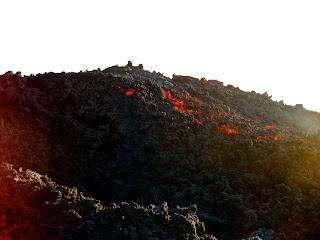




I didn’t know what language to speak, the landscape changed completely, I started out in Guatemala and ended up in the Carribean. “Sí, hubo un otro mundo completamente diferente.” Another world, our argentine friend remarked later laughing about Lívingston, sitting on a floating dock on the Río Dulce River in the late afternoon rays.
We were staying in what I like to think of as “the tree house”, or the crazy cabin on wooden stilts on the side of the Río Dulce River. Complete with wooden boardwalks connected to the main cabana and other cabins, canoes, a water taxi to get to the mainland, and mosquito nets, it was not your typical huespedaje (aka cheap hotels that function along the same line as a hostel but are more common in Central America.) It was so much better, isolated and serene after the hustle and bustle of cities and tourist traps. Dulce, or sweet in Spanish was a perfect way to describe this unspoiled river with banks of lush vegetation and shear walls of limestone bordering this rather large river. Much less commercial and visited than Lago de Atilan, boats were necessary to get from point to point but the pace of everything was much more reminiscent of island style living.
This way of life might also have been instigated by its proximity to the Carribean, Río Dulce flows right out into the Carribean Sea. Lívingston right on the upper lip of Guatemala and the carribean coast, is a fusion of Guatemalan heritage and culture mixed with Caribbean lifestyle and flavor. Lívingston is also unique to Guatemala in that it is home to the Garífuna, an independent population of black Guatemalans that trace their ancestory back to the Carribean island of St. Vincent and later displaced by the British and shipped to the islands off of Honduras. It is here where I wasn’t sure if I should be speaking Spanish or English. The Garífuna are affectionately known as the only black community in Guatemala, who carry their Caribbean roots alongside their Spanish speaking Guatemalan adaptations.
Lívingston is really a small community, not much more than a stopover for people traveling by boat from Belize, Honduras, or the Río Dulce, one could see most of it in two hours. Pero, para conocer Lívingston, se necesita mas tiempo. In Spanish there are two verbs for to know: saber and concocer. Saber is to know facts, such as Lívingston is the only place to get unique pan de coco or coconut bread and Tapado a fresh seafood soup rico with coconut milk. Conocer on the hand is to know a person or place intimately. My trip to Lívingston is a perfect example I have been there, passed a couple of hours, researched it; por mí sabé Lívingston, pero para concocer Lívingston necesito mas tiempo. I need more time to explore its streets, exotic cuisine and Caribbean charm. More time to head out to the beach or uncover more of its Caribbean roots in dancing styles and idiomatic expressions.

















































